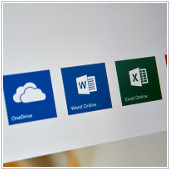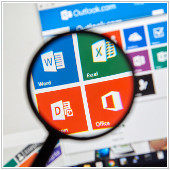
Cybersecurity systems are getting better at identifying and preventing attacks coming from all directions. At the same time, hackers are coming up with new ways to bypass these systems. While online scams are the most common ways to do this, cybercriminals have discovered a new attack method using Microsoft Office.
The post Beware of sneaky Microsoft Office malware appeared first on Complete Technology Resources, Inc..


Cybersecurity systems are getting better at identifying and preventing attacks coming from all directions. At the same time, hackers are coming up with new ways to bypass these systems. While online scams are the most common ways to do this, cybercriminals have discovered a new attack method using Microsoft Office.
What’s the new Office threat?
The Office exploit takes advantage of Microsoft’s Dynamic Data Exchange (DDE), a protocol that sends messages and data between applications. For example, DDE can be used to automatically update a table in a Word document with data collected in an Excel spreadsheet.
The problem with this is hackers can create DDE-enabled documents that link to malicious sources rather than to other Office apps. Theoretically, this allows hackers to launch scripts that download Trojan viruses from the internet and execute it before the user is even aware of the attack.
And unlike most malware-embedded Office files, which are usually blocked by security protocols from Microsoft, DDE exploits are instant. Once a compromised Word file is opened, it automatically executes the hack.
Outlook at risk
What’s even more alarming are the DDE vulnerabilities in Outlook. Recent reports found that hackers can embed malicious code in the body of an email or calendar invite, allowing them to perform phishing scams without a file attachment.
Fortunately, Outlook DDE attacks are not as automated as Word or Excel DDE attacks. Two dialog boxes will usually appear when you open the email asking if you want to update a document with data from linked files and start a specific application. Simply clicking ‘No’ on either of these boxes will stop the attack from executing.
Defending against DDE attacks
Beyond saying no, you can protect yourself by following these security best practices:
- Evaluate the authenticity of unsolicited emails before interacting with them and don’t open attachments from unfamiliar contacts.
- View emails in plain text format to completely stop DDE attacks embedded directly in emails from running. Note that this will also disable all original formatting, colors, images, and buttons.
- Use a strong email security system that prevents phishing emails, spam, and other unwanted messages from reaching your inbox.
- Get in the habit of checking for Microsoft updates, as they're usually quick to release patches after vulnerabilities have been discovered.
Last but not least, consider working with our team. We’re Microsoft Office experts who can keep you safe from the latest threats. Call us today to get started!
The post Beware of sneaky Microsoft Office malware appeared first on Complete Technology Resources, Inc..


 When most people think of the iPhone, an Excel spreadsheet isn’t exactly the first thing that springs to mind. Whether it was the smartphone’s form factor or a general aversion to working from a mobile device, most of us had no reason to search out iOS versions of Microsoft’s legendary productivity software. Nowadays, screens have more space, and working outside office hours has become commonplace. Along with these developments, Office apps have been steadily getting better, and the most recent update is another pleasant surprise -- let’s take a look.
When most people think of the iPhone, an Excel spreadsheet isn’t exactly the first thing that springs to mind. Whether it was the smartphone’s form factor or a general aversion to working from a mobile device, most of us had no reason to search out iOS versions of Microsoft’s legendary productivity software. Nowadays, screens have more space, and working outside office hours has become commonplace. Along with these developments, Office apps have been steadily getting better, and the most recent update is another pleasant surprise -- let’s take a look.
 SMBs see a lot of benefits to utilizing browser-based software, but generally avoid implementation for privacy and security concerns. Microsoft has finally addressed these issues by allowing businesses to host Microsoft Office locally. Popular pieces of software that usually take up a lot of space can now be securely accessed through a private cloud. Read on to learn more about this service and its viability in your office.
SMBs see a lot of benefits to utilizing browser-based software, but generally avoid implementation for privacy and security concerns. Microsoft has finally addressed these issues by allowing businesses to host Microsoft Office locally. Popular pieces of software that usually take up a lot of space can now be securely accessed through a private cloud. Read on to learn more about this service and its viability in your office.